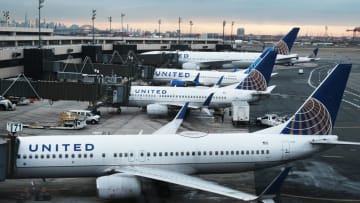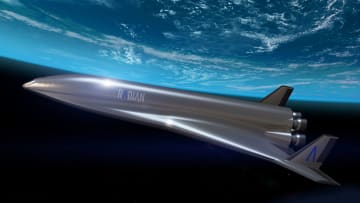دبي، الإمارات العربية المتحدة (CNN) -- في أواخر عام 1965، في مطار هيثرو بالعاصمة البريطانية لندن، حققت رحلة تجارية قادمة من العاصمة الفرنسية باريس إنجازاً تاريخياً باعتبارها أول رحلة تهبط بشكل تلقائي.
كانت الطائرة من طراز "ترايدنت 1C" وتديرها شركة "BEA"، التي أصبحت فيما بعد شركة الخطوط الجوية البريطانية - مجهزة بخاصية جديدة تم تطويرها للطيار الآلي، والمعروفة باسم "الهبوط الآلي".
اليوم، يتم تثبيت أنظمة الهبوط الآلي على غالبية الطائرات التجارية، ما يُحسّن سلامة الهبوط في الطقس الصعب أو ضعف الرؤية.
الآن، بعد نحو 60 عامًا، تقدّم ثالث أكبر شركة مصنعة للطائرات في العالم، أي شركة "إمبراير" البرازيلية، تقنية مماثلة، ولكن للإقلاع.
وذكرت شركة "إمبراير" أن هذه التقنية التي تُسمى "نظام الإقلاع المحسن E2"، لن تعمل على تحسين السلامة من خلال تقليل عبء عمل الطيار فحسب، بل ستعمل أيضًا على تحسين المدى ووزن الإقلاع، ما يسمح للطائرات التي تستخدمها بالسفر لمسافات أبعد.

وأوضح باتريس لندن، وهو كبير مهندسي الأداء لدى شركة "إمبراير"، الذي عمل على المشروع لأكثر من عقد من الزمن أن "النظام يُعد أفضل من الطيارين، لأنه يعمل بالطريقة ذاتها طوال الوقت. إذا قمت بـ 1000 عملية إقلاع، فستحصل على 1000 عملية من الإقلاع ذاته بالضبط".
وأضاف لندن أن "إمبراير E195-E2" بدأت بالفعل في إجراء اختبار الطيران، بهدف الحصول على موافقة سلطات الطيران في عام 2025، قبل تقديمه في مطارات مختارة.
ويسمح النظام للطائرة بالإقلاع في أقرب وقت ممكن وبزاوية أكثر انحدارا، ولكن من دون التسبب في أي ارتطام لذيل الطائرة، وهو وضع خطير يحدث عندما يلامس ذيل الطائرة مدرج المطار أو عقبة أثناء الإقلاع، وأحيانًا ما يكون ذلك نتيجة خطأ من الطيار.
وقال لويس كارلوس أفونسو، نائب الرئيس الأول للهندسة والتطوير التكنولوجي في "إمبراير": "إذا كنت طيارًا، فيجب عليك أن تترك مجالًا للخطأ. ولكن لأن هذا النظام دقيق ومتسق للغاية، فلن تحتاج إلى الهوامش ذاتها ويمكنك العمل بالقرب من الحد الأمثل في الدوران الأولي، كما لو كنت أقرب إلى ملامسة ذيل الطائرة. ولكنك لن تفعل ذلك".
وأكدت شركة "إمبراير" أن هذا التحسين يسمح بزيادة وزن الإقلاع، ما يعني إما المزيد من الركاب أو مدى أطول، يصل إلى 350 ميلًا بحريًا، ما يفتح آفاقا جديدة لوجهات كانت مستبعدة مع مجموعة المطارات والطائرات ذاتها، ولكن من دون نظام الإقلاع الآلي.
حاليًا، تخطط "إمبراير" لتقديم النظام في ثلاثة مطارات: مطار لندن سيتي في إنجلترا، ومطار فلورنسا في إيطاليا، ومطار سانتوس دومونت في البرازيل.

ولكن ماذا يحدث في حالة الطوارئ؟ يتفاعل النظام بالطريقة ذاتها التي يتفاعل بها الطيار الآلي العادي، فيطلق إنذارًا ويعيد التحكّم إلى الطيارين.
وأوضح أفونسو: "لقد اختبرت النظام في حالات الفشل، وخاصة عندما تفقد أحد المحركات. من المدهش كيف يمكنك تقليل عبء العمل، وخاصة أثناء حالات الفشل. كلما قللت من عبء العمل، فإنك تجعل العملية أكثر أمانًا"، لافتًا إلى أن "هذه ليست الخطوة الأولى نحو الأتمتة الكاملة، أو حتى الاستغناء عن أحد الطيارين".
وذكر أفونسو: "نحن نضيف مرحلة واحدة فقط، وهي مرحلة الإقلاع، حيث يمكنك الآن تشغيل الطيار الآلي، لكنها بعيدة كل البعد عن الاستقلال الذاتي، لأن الطيار موجود، وإذا حدث فشل، فإن الطيار هو الذي سيتولى السيطرة".
من جهته، اعتبر غاري كريشلو، محلل الطيران لدى شركة "Aviation News Limited" المختصة بأخبار الطيران، أنه في هذه المرحلة من السابق لأوانه معرفة كيف ستترجم الفوائد التي تروج لها شركة "إمبراير" للنظام إلى تشغيل في العالم الحقيقي.


